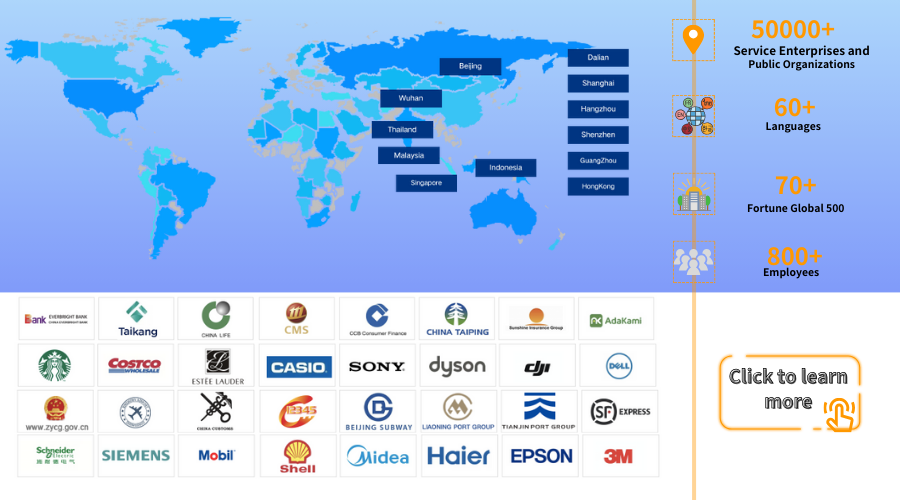How Can Video Chat Transform Customer Service Support
Article Summary:Traditional text and voice-based customer service can no longer meet the demand for instant, intuitive communication, paving the way for video chat to provide a whole new level of customer experience.
Table of contents for this article
Customer service centers serve as the touchpoints between businesses and their customers, handling various stages from pre-sales, through sales, to after-sales. The diversification of communication methods and channel interfaces gives customer service centers inherent advantages in service experience, value-added services, marketing management, data analysis, and customer feedback. Traditional text and voice-based customer service can no longer meet the demand for instant, intuitive communication, paving the way for video chat to provide a whole new level of customer experience. This article delves into the unique features of video chat, its wide-ranging applications, implementation steps, and the significant benefits it brings to customer support. It also examines Udesk's video chat as an example to showcase the latest advancements in this field.
Features of Video Chat

- Face-to-face Communication: Video communication allows customers to express their issues more intuitively, enabling customer service representatives to quickly and accurately understand their needs, reducing misunderstandings in communication. Especially in scenarios requiring detailed demonstrations, customer service representatives can showcase products or demonstrate procedures in real-time, improving problem-solving efficiency.
- Overcoming Spatial and Temporal Limitations, Providing Instant Service: Regardless of where customers are located, as long as they have an internet connection, they can initiate a video call at any time to receive instant service support. This shortens the gap between problem reporting and resolution, significantly enhancing customer satisfaction and loyalty.
- Personalized Service: By observing facial expressions and voice tones, customer service representatives can better capture customer emotions, allowing them to provide more targeted service strategies. This creates a more genuine and close connection, fostering greater trust and loyalty toward the brand.
- Mobility: Integrate live video chat into iOS and Android apps using REVE Chat's mobile SDK. Therefore, customers can enjoy the convenience of video customer service no matter where they are.
Application scenario/industry
The application of video chat has been widely adopted across various industries. Whether in electronics or automotive sales, businesses can enhance their post-sales services with more personalized and professional assistance through video support. Especially in today's era of remote work and online shopping dominance, video chat has become a crucial tool for companies to stay competitive.
E-commerce sector: Video chat extends beyond product showcasing and return/exchange guidance, evolving into a novel shopping experience. For instance, customers can directly connect with brand experts or salespersons via video, allowing for comprehensive and detailed examination of product materials, design features, and even virtual try-ons or demonstrations. For high-end jewelry and luxury items, where attention to detail and texture matters, video support can significantly reduce purchasing doubts and facilitate decision-making. During the return/exchange process, video customer service swiftly confirms the product's condition, guides customers on proper packaging, reducing misunderstandings and delays, thus enhancing the overall post-sales service experience.

Fintech industry: Video chat plays a crucial role in identity verification. Faced with increasingly sophisticated online fraud, financial institutions utilize video authentication technology, employing facial recognition and live detection to ensure the authenticity of user identities, thereby significantly reducing fraud risks. In transaction consultation scenarios, video support enables clients to directly communicate with advisors, discussing complex issues such as investment strategies and loan conditions. This face-to-face communication enhances service transparency and trust, providing clients with greater peace of mind when making significant financial decisions.
Remote healthcare: The use of video chat greatly expands the accessibility of medical services. Doctors can conduct preliminary assessments based on video, such as observing skin lesions or performing simple physical examinations, and provide personalized guidance in post-operative recovery, chronic disease management, and more. Patients can receive high-quality medical services without physically visiting hospitals, which is particularly beneficial for those residing in remote areas or with mobility issues. Additionally, psychological counseling services conducted through video support can effectively deliver emotional support, helping patients open up in a comfortable environment and promote mental well-being.
Educational tutoring: One-on-one video teaching provides students with personalized learning support. Students can engage in real-time interaction with teachers via video, ask questions, and receive answers, which aids in better understanding of concepts and improves learning efficiency. Furthermore, educational institutions can utilize video customer service platforms to offer online courses, providing students with flexible learning options to meet diverse learning needs.
Deploying Video Chat in 5 Steps

- Needs Analysis: Clearly define service objectives, customer demographics, and expected outcomes to select a suitable video customer service platform.
- Platform Selection: Evaluate factors such as technical stability, comprehensive functionality, and integration capabilities. Professional platforms like Udesk are excellent choices.
- System Integration: Seamlessly integrate the video customer service system with existing CRM, ERP, and other systems to ensure data flow.
- Employee Training: Provide training for the customer service team on technical operations, communication skills, and emotional management.
- Trial Run and Optimization: Initiate a trial run, collect feedback, and continuously optimize service processes and technical support.
Introduction of Udesk's Video Chat
Udesk Video Customer Service is a comprehensive and intelligent platform dedicated to providing enterprises with more efficient and convenient after-sales service solutions. With features like the video seat workstation, it empowers customer service personnel to efficiently handle video requests. Moreover, it extends its reach through support for APP video workstation and WeChat Mini Program SDK integration, expanding service coverage.
Notably, its video recording feature allows enterprises to review service interactions for quality monitoring and training improvements post-interaction. Additionally, Udesk's robust multi-channel access capabilities and AI technology ensure the continuity and intelligence of customer service, facilitating the establishment of efficient and personalized after-sales service systems.
Video chat, as an emerging force in the after-sales service domain, is reshaping the customer experience in unprecedented ways. By tapping into its potential, enterprises can not only effectively enhance service quality and efficiency but also distinguish themselves in the competitive market, fostering stronger customer relationships.
》》Click to start your free trial of Video Chat, and experience the advantages firsthand.
The article is original by Udesk, and when reprinted, the source must be indicated:https://www.udeskglobal.com/blog/how-can-video-chat-transform-customer-service-support.html
Customer Service SupportVideo ChatVideo Chat Tool

 Customer Service& Support Blog
Customer Service& Support Blog



